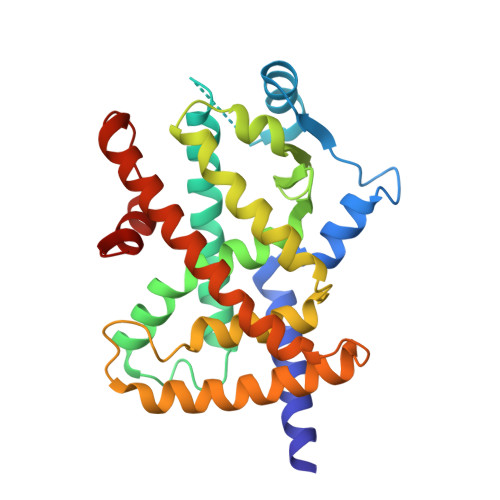Structure-Activity Relationship of 2,4-Dichloro-N-(3,5-dichloro-4-(quinolin-3-yloxy)phenyl)benzenesulfonamide (INT131) Analogs for PPAR gamma-Targeted Antidiabetics.
Frkic, R.L., He, Y., Rodriguez, B.B., Chang, M.R., Kuruvilla, D., Ciesla, A., Abell, A.D., Kamenecka, T.M., Griffin, P.R., Bruning, J.B.(2017) J Med Chem 60: 4584-4593
- PubMed: 28485590
- DOI: https://doi.org/10.1021/acs.jmedchem.6b01727
- Primary Citation of Related Structures:
5TTO - PubMed Abstract:
Peroxisome proliferator-activated receptor ¦Ã (PPAR¦Ã) is a nuclear receptor central to fatty acid and glucose homeostasis. PPAR¦Ã is the molecular target for type 2 diabetes mellitus (T2DM) therapeutics TZDs (thiazolidinediones), full agonists of PPAR¦Ã with robust antidiabetic properties, which are confounded with significant side effects. Partial agonists of PPAR¦Ã, such as INT131 (1), have displayed similar insulin-sensitizing efficacy as TZDs, but lack many side effects. To probe the structure-activity relationship (SAR) of the scaffold 1, we synthesized 14 analogs of compound 1 which revealed compounds with higher transcriptional potency for PPAR¦Ã and identification of moieties of the scaffold 1 key to high transcriptional potency. The sulfonamide linker is critical to activity, substitutions at position 4 of the benzene ring A were associated with higher transcriptional activity, substitutions at position 2 aided in tighter packing and activity, and the ring type and size of ring A affected the degree of activity.
Organizational Affiliation:
Department of Molecular Medicine, The Scripps Research Institute, Scripps Florida , Jupiter, Florida 33458, United States.

















